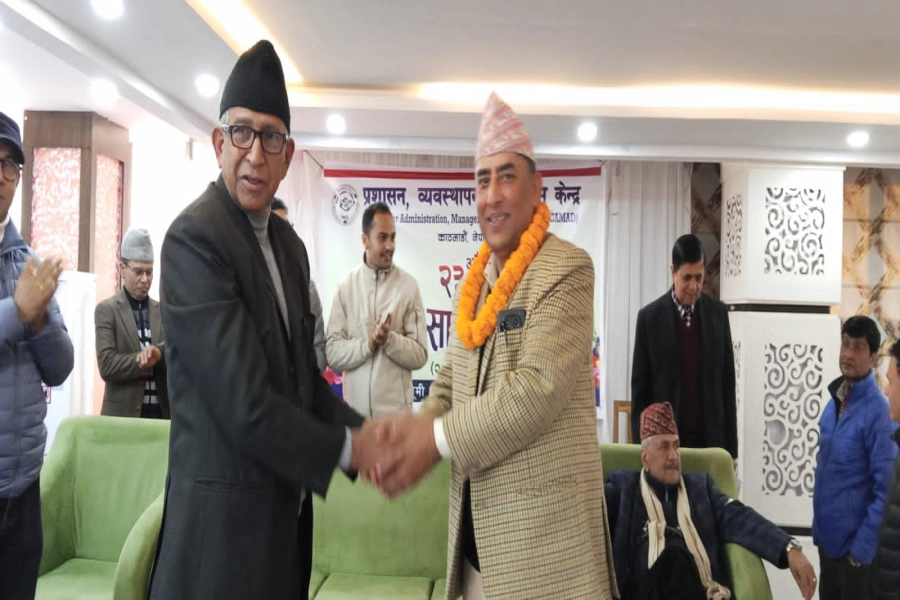There is a problem with the idea of trilateral cooperation, a term that is widely used here but is poorly understood
The publication of a photograph of our Prime Minister Pushpa Kamal Dahal in company of his Indian counterpart Narendra Modi and Chinese President Xi Jinping created many ripples in Kathmandu. The photo, taken in Goa, India, on the sidelines of the BRICS-BIMSTEC Outreach Summit, had a section of our intelligentsia claiming that it signals a change in Indian attitude on trilateral cooperation between the three countries. (India had otherwise opposed the idea till now, saying it was premature.) Further, our prime minister made it sound like the meeting was a step towards such trilateral cooperation. Although the Indian side has denied there was any mention of trilateral cooperation during the meeting, some of us still believe that it’s a harbinger of good things to come.
Now, my regrets to rain on their parade, but the photo, which is making them go gaga, signifies something entirely else. Something that we are not comfortable talking about publicly for the fear that it will anger our neighbors because our intellectual timidity is exemplary. As I see it—and I could be wrong, and would be very happy if I am proven wrong—the photo’s message is clear. Both our neighbors have stopped seeing us as an independent entity. India sees us as its extension and wants to be involved in our dealings with China, and China too seems comfortable with India’s position.
The Chinese were very clear about India’s influence in Nepal, and up until the previous Hu Jintao-Wen Jiabao administration was fine with it. On November 30th, 2012, the then Chinese ambassador to Nepal Yang Houlan had told reporters in Kathmandu that China and India were developing a common view on Nepal. To quote Yang, “China has more cooperation with India on Nepal affairs. It is good for our three countries.” Translation: we do not want to challenge India in Nepal. However, Chinese signaled a change in their Nepal policy starting 2013. With the Xi Jinping- Li Keqiang team in power, China did not want to be on the same page as India and pursued a proactive diplomacy, perhaps as a reaction to India’s growing involvement in the South China Sea and its defense cooperation with the US and Japan.
These days the Chinese side seems to have again come to grips with the fact that India calls the shots in Nepal. Hence there’s no reason to oppose what it can do nothing about.
It knows that when push comes to shove, it can use Nepal the way it wants to owing to our poor defense and economy. The ouster of KP Sharma Oli, it seems, was an eye-opener for China. The cancellation of Chinese president’s visit to Nepal and the fact that China is yet to extend an official invitation to PM Dahal to come visit signal the end of China’s active diplomacy in Nepal.
It is no secret that India wants to make sure no other power becomes dominant in Nepal.
Therefore, it wants to control Nepal’s relations with other countries. It has already made many countries view Nepal through Indian lens. It is quite clear from the Indian perspective that agreeing to trilateral cooperation not only entails Nepal being equal to it, but also allows China to become active in Nepal, and India would never agree to that.
Then there’s a problem with the idea of trilateral cooperation itself. It is one of those concepts that is widely used but poorly understood. Let’s be honest: For a concept like this to work takes years of brainstorming, which means the government needs to spend a serious amount of money on think-tanks that are researching on the ways to make it a reality. It also involves us being trusted by both our neighbors and being able to play the role of a mediator in case they have disputes. And no Nepali in his/his right mind can say we are there yet, or even getting there. Therefore our leaders talking about trilateral without any preparation is as absurd as saying that in 10 years we will be sending a manned mission to the moon. (But it won’t be surprising if our leaders actually start saying it.)
Also, we are yet to define exactly what it entails in our context. What started out as an academic exercise to understand the ways in which the three countries could cooperate—from cultural to academic to economic spheres—the concept got hijacked by the people who had little or no understanding of it. Suddenly, it was everywhere and the political leaders used it to hoodwink us into believing that they are indeed doing something to accelerate Nepal’s economic growth and enhance our regional standing.
Since those in the leadership position seem to have no idea what it means or how to achieve it, we have to put up with “Nepal wants to be a dynamic bridge between India and China” humbug every once in a while. And our highly politicized academics naturally haven’t bothered to ask the simplest of questions on trilateral cooperation: How do we become a bridge and how will it benefit all three of us? If one really thinks about it, in the absence of a clear strategy calling ourselves a link between India and China is meaningless. Imagine Belarus saying it wants to serve as a dynamic bridge connecting the US and Russia.
Is it going to be a group of three that discusses regional and global issues and come up with common viewpoint and agenda? Is it going to be more economic in nature to get both India and China help us to develop? If the former, then let’s be certain, it’s not going to happen for at least another 50 years.
If the latter, then, diplomatically it makes sense to call it India-China bilateral cooperation on Nepal. Trilateral signifies we are an active partner, hence equal, whereas India-China bilateral cooperation mechanism on Nepal signifies we are passive and we agree to whatever the two decide for us. Perhaps rephrasing would get India to agree to the idea. If not, it will be what it is, a chimera.
Nepal, India and Bangladesh signing trilateral agreement to fac...

trailokyaa@yahoo.com





































